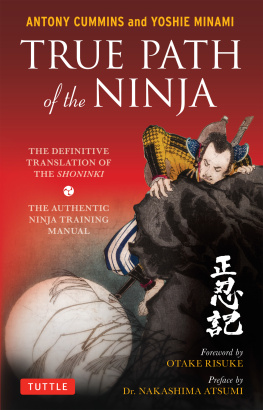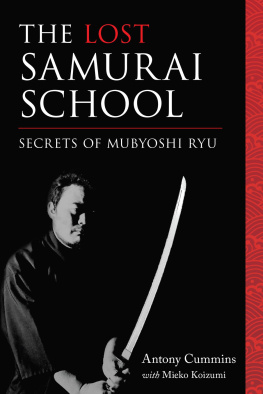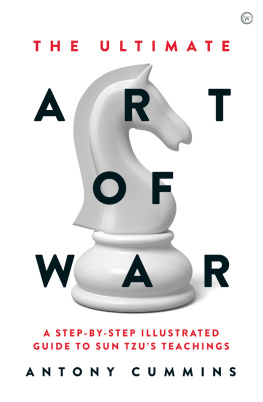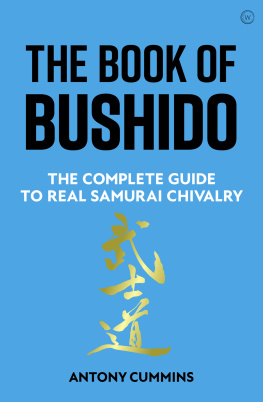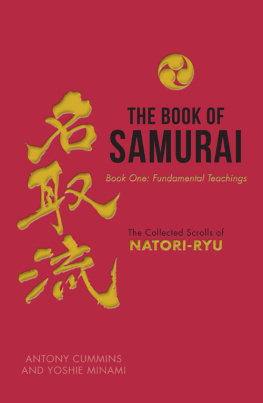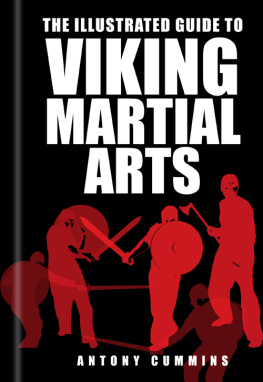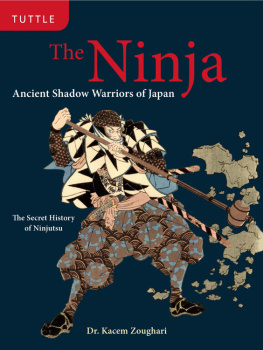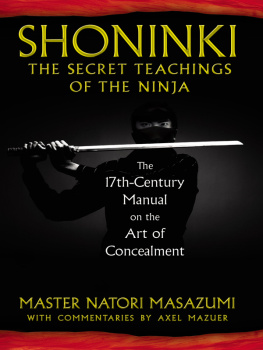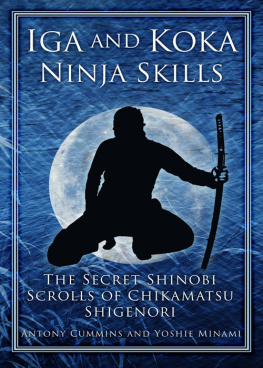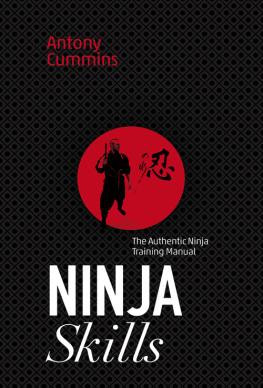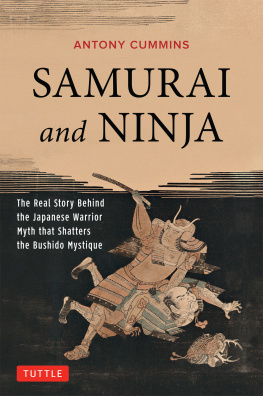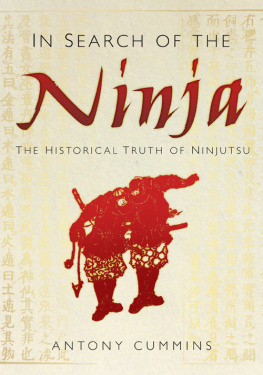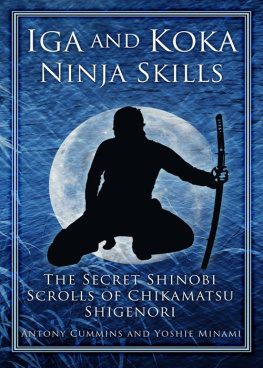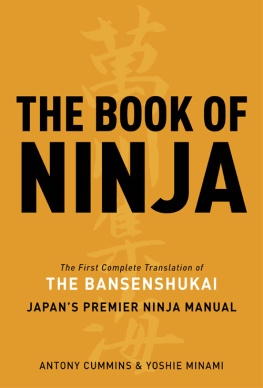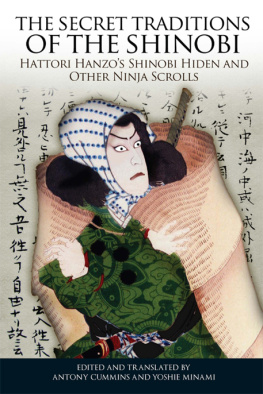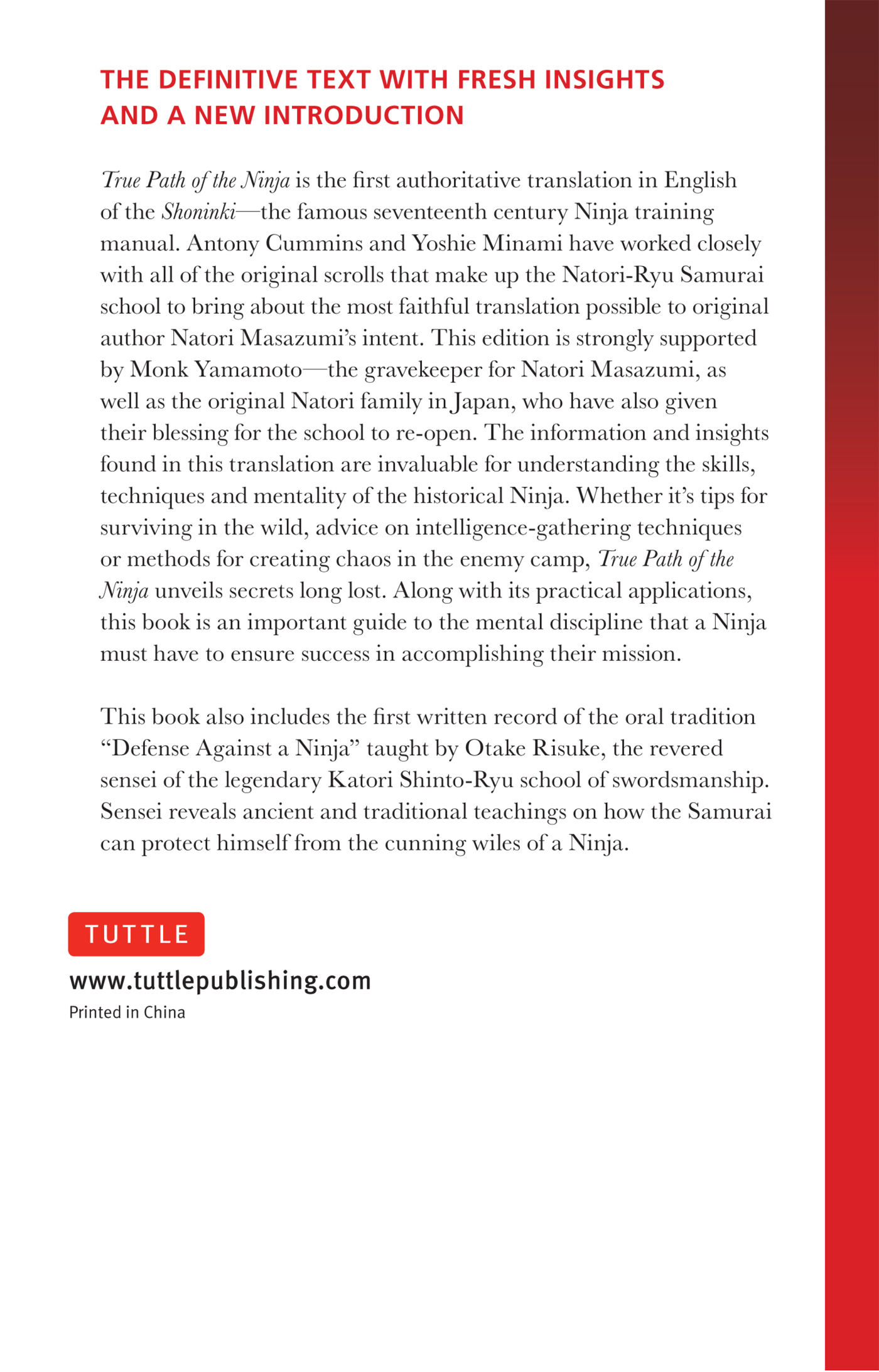About Tuttle
Books to Span the East and West
Our core mission at Tuttle Publishing is to create books which bring people together one page at a time. Tuttle was founded in 1832 in the small New England town of Rutland, Vermont (USA). Our fundamental values remain as strong today as they were then to publish best-in-class books informing the English-speaking world about the countries and peoples of Asia. The world has become a smaller place today and Asias economic, cultural and political influence has expanded, yet the need for meaningful dialogue and information about this diverse region has never been greater. Since 1948, Tuttle has been a leader in publishing books on the cultures, arts, cuisines, languages and literatures of Asia. Our authors and photographers have won numerous awards and Tuttle has published thousands of books on subjects ranging from martial arts to paper crafts. We welcome you to explore the wealth of information available on Asia at www.tuttlepublishing.com .
About the Author
Antony Cummins heads the Historical Ninjutsu Research Team, a project that documents, translates and publishes medieval documents pertaining to the shinobi of Japan. Alongside this, Antony has revived an old samurai school of war, Natori-Ryu, with the aim of educating people on historical Japanese warfare. His aim is to establish a correct understanding of Japanese military arts and to bring about a deeper understanding and respect for Japanese arts. He is on most social media platforms, and information can be found at www.natori.co.uk.
Also by the Author
Books
Samurai and Ninja
Book of Samurai
Book of Ninja
Iga and Koka Ninja Skills
Secret Traditions of the Shinobi
Samurai War Stories
In Search of the Ninja
About the Translator
Yoshie Minami was born in Tokyo and currently lives in Saitama, Japan. She has a B.A. degree in Linguistics from the International Christian University. As a translator, she has a published True English ( 2009).
ACKNOWLEDGMENTS
A special thank you to Dr. Nakashima,
for without his solid work on the Shoninki manual
this project would not have been possible. Also to Mr. Otake,
the head of the Katori school, who was a true gentleman.
Bibliography
,
,,
,,
,,
PHP
PHP
Contents
* These chapters were not featured in the original table of contents and one presumes that the author simply missed including them. Therefore, they have been added here for the ease of the modern reader.
Please note that the publisher and author(s) of this instructional book are NOT RESPONSIBLE in any manner whatsoever for any injury that may result from practicing the techniques and/or following the instructions given within. Martial arts training can be dangerousboth to you and to othersif not practiced safely. If youre in doubt as to how to proceed or whether your practice is safe, consult with a trained martial arts teacher before beginning. Since the physical activities described herein may be too strenuous in nature for some readers, it is also essential that a physician be consulted prior to training.
Published by Tuttle Publishing, an imprint of Periplus Editions (HK) Ltd.
www.tuttlepublishing.com
Copyright 2011, 2017 Antony Cummins and Yoshie Minami
All rights reserved. No part of this publication may be reproduced or utilized in any form or by any means, electronic or mechanical, including photocopying, recording, or by any information storage and retrieval system, without prior written permission from the publisher.
Library of Congress cataloging in process.
ISBN 978-4-8053-1439-5
ISBN 978-1-4629-0089-3 (ebook)
Distributed by
North America, Latin America & Europe
Tuttle Publishing
364 Innovation Drive
North Clarendon, VT 05759-9436 U.S.A.
Tel: (802) 773-8930
Fax: (802) 773-6993
info@tuttlepublishing.com
www.tuttlepublishing.com
Japan
Tuttle Publishing
Yaekari Building, 3rd Floor
5-4-12 Osaki, Shinagawa-ku
Tokyo 141 0032
Tel: (81) 3 5437-0171
Fax: (81) 3 5437-0755
sales@tuttle.co.jp
www.tuttle.co.jp
Second edition
20 19 18 17 4 3 2 1 1607CM
Printed in China
TUTTLE PUBLISHING is a registered trademark of Tuttle Publishing, a division of Periplus Editions (HK) Ltd.
This book is dedicated to
John Cummins
My father, who has fueled this entire venture
Foreword

It was totally unexpected that I would be asked to write the fore-word for this publication of the ninjutsu densho, True Path of the Ninja (or the Shoninki ) by Mr. Antony Cummins and Ms. Yoshie Minami, but I take pleasure in writing a few words for this book.
In Japan, ninjutsu, or the shinobi, has been well known and has been on everyones lips since old times. However, the truth about ninjutsu is what you cannot see, say or hear, thus see no evil, speak no evil and hear no evil . Therefore, ninjutsu would only be handed down as the most secret of secrets and only from a special person to another special one. Though people in the modern world perceive ninjutsu as nothing more than that which is found within the pages of comics or novels, the true art of ninjutsu and the ninja are what we might call spies, which are still active today.
True Path of the Ninja , which has been published here in the English language, in my opinion, is the most excellent masterpiece of all the manuscripts on ninjutsu that have ever been written. Also, knowledge, even if it is out of use now, is something you never get too much of. If you read this book, I am certain that there should be something here that you may find helpful in the course of your life.
Otake Risuke
Katori Shinto-Ryu, Head Teaching Master
TRUE PATH
of the NINJA
INTRODUCTION
The Shoninki
Lay before you in these pages are the deepest secrets of the ninja. The ancient scroll translated here is the Shoninki ( )a true shinobi account and one of three ninja scrolls from a samurai warfare school known as Natori-Ryu ( ). The term shinobi or shinobi no mono is the correct way of saying ninja in medieval Japanese. The scroll was written by the samurai Natori Sanjuro Masazumi ( ), who was known to his peers as Issui Sensei and was a warrior who served Lord Tokugawa Yorinobu as a close retainer and warfare specialist in the city of Wakayama, Japan. The Shoninki is only one of approximately 30 manuals that make up the Natori School of samurai warfare, and is the final ninja scroll of the whole curriculum. A student of Natori-Ryu is expected to have studied the main scrolls before they arrive at the secret teachings of the shinobi, thus the Shoninki is written from the perspective that the student has a full knowledge of samurai warfare and the details of Natori-Ryu. Therefore, as a modern reader, understand that while this manual may seem vague in parts or lacking in specifics, it was written for warriors who could fill in the gaps though years of mastery in samurai ways. Therefore this scroll should be seen as a final conversation between Natori Masazumi himself and his students, giving them a full understanding of the ways of the ninja.
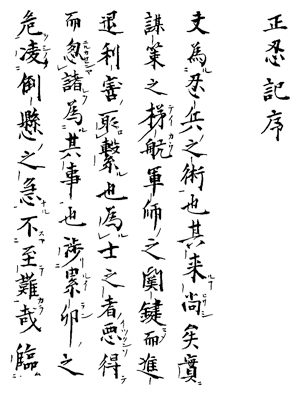
Next page
